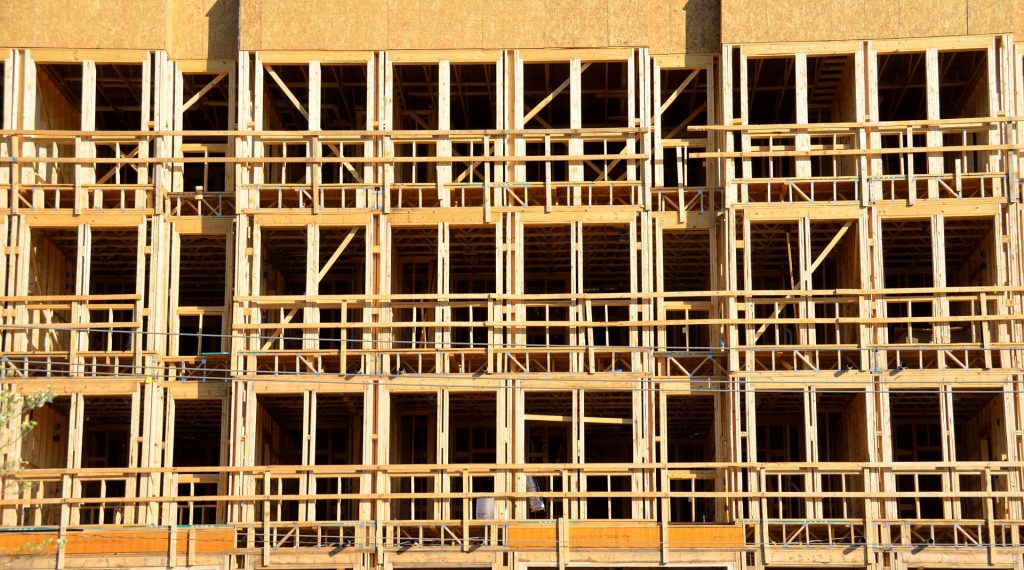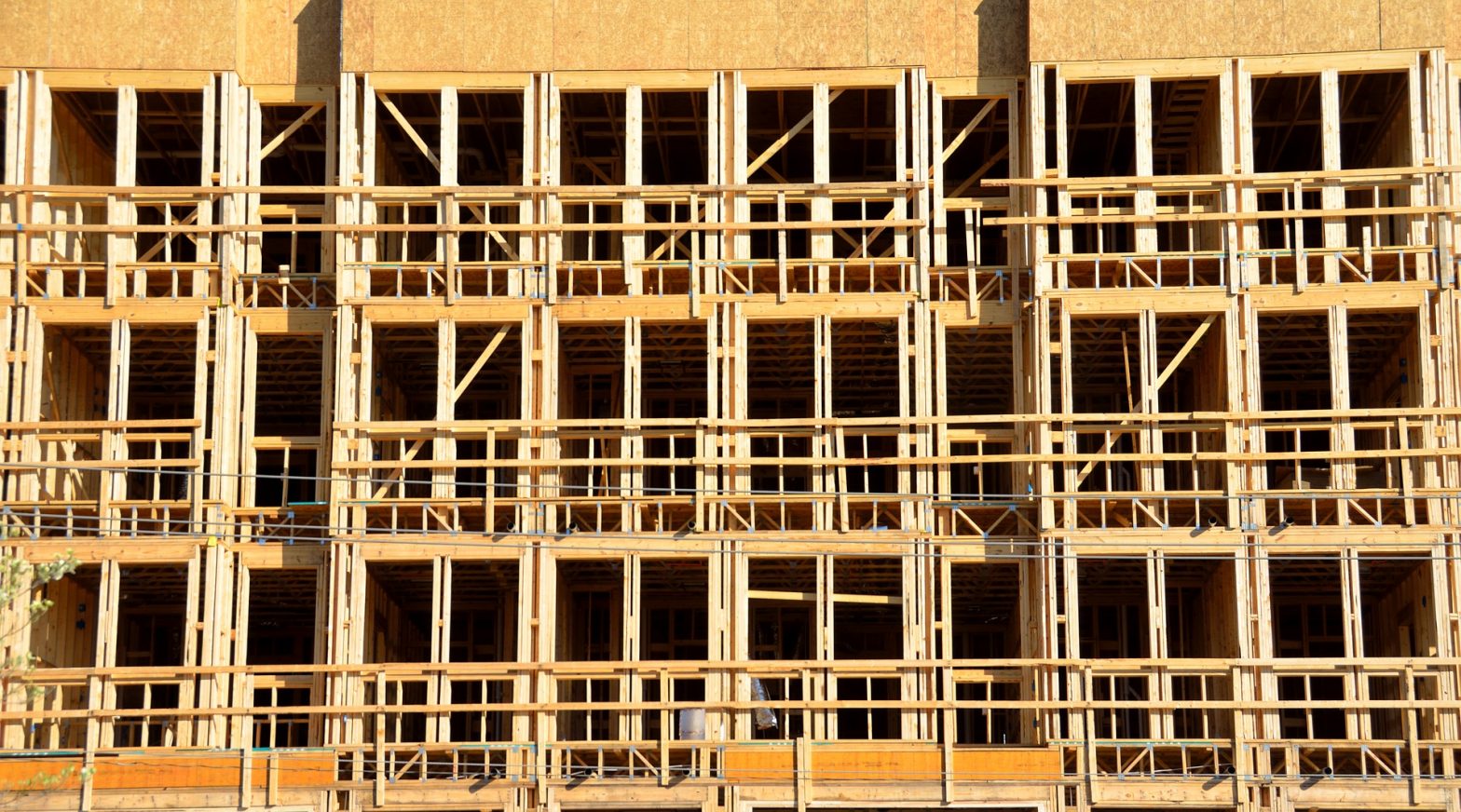 To the uninitiated, a lot of everyday building construction with wood framing and concrete foundations looks pretty similar. However, from a structural engineering design perspective, they could be quite different. Light commercial and multifamily buildings, as well as many custom homes, are more complex and subject to greater load demands and code requirements than simple one- and two-family homes. The design of some or most of the structural systems in these structures must be designed based on calculations so that they perform as required under the anticipated loads, rather than conforming to traditional practices prescribed by the residential code. It is normal for the construction documents for these projects to include structural engineering drawings to communicate to the contractor how engineered structural components and systems fit together.
To the uninitiated, a lot of everyday building construction with wood framing and concrete foundations looks pretty similar. However, from a structural engineering design perspective, they could be quite different. Light commercial and multifamily buildings, as well as many custom homes, are more complex and subject to greater load demands and code requirements than simple one- and two-family homes. The design of some or most of the structural systems in these structures must be designed based on calculations so that they perform as required under the anticipated loads, rather than conforming to traditional practices prescribed by the residential code. It is normal for the construction documents for these projects to include structural engineering drawings to communicate to the contractor how engineered structural components and systems fit together.
In the residential and light commercial construction sectors, some contractors do not seem to know what to do with structural drawings. The apparent similarity of engineered construction to traditional residential construction results in certain contractors failing to understand how they are different. Not knowing what they are taking on, they may be less expensive than their more sophisticated counterparts and are more likely to secure projects with inexperienced owners. This doesn’t always end well.
For any given building project, there are two approaches to structural design. “Conventionally” constructed buildings can be built according to prescriptive design solutions, usually found in tables in the applicable residential or building code. The prescriptive provisions typically follow traditional construction practices that predated the code with modernizations and additional requirements to protect occupant safety from instability, high winds and earthquakes. Any construction beyond the limits of the prescriptive provisions must be rationally designed “in accordance with accepted engineering practice”, usually by a licensed design professional. Simple one- and two-family homes are usually built prescriptively, with the owner or contractor completing the structural “design” by following the code. Other building types are generally designed professionally because conformance with prescriptive provisions is too limiting.
Contractors working primarily in the residential market are accustomed to the prescriptive system. Residential construction drawings, when they exist at all, are usually prepared by the architect alone. While architectural drawings can include detailed depictions of enclosure assemblies and even some structural details, for simple projects the drawings might consist of nothing more than floor plans and elevations. In this case, the drawings are essentially a concept approved by the owner and building official (if there is one). The contractor is left to decide the materials and connections used to build the structure so that it satisfies the concept shown on the plans. The building official – and perhaps the architect if there is one and the owner will allow them – checks that the construction satisfies the plans and the residential code.
When portions of the structure must be engineered the process changes. The engineer now decides how the structure is framed, often working closely with the architect. The contractor loses discretion over materials, elements sizes and connections for portions of the structure designed by the engineer. However other parts of the structure may still be designed prescriptively. With the introduction of engineered elements, the drawings tend to be more detailed and specific because the non-conventional parts of the structure must be located and detailed for proper integration into the whole.
Moving from residential to light commercial and multi-family construction, the process changes further. These buildings often consist of the same systems and elements as residential construction. While prescriptive provisions exist in the building code, their use is not as ubiquitous as in residential construction. Instead, the structure is designed based on structural engineering analysis, application of material design codes and application of engineering judgment. The manifestation of this engineering is usually a full set of structural drawings. Structural drawings provide greater granularity of detail as to the location, composition and sizes of the elements of the structure. Details of connections and various other conditions are commonly provided. That reduces but does not eliminate the discretion of the contractor.
Structural drawings are partially conceptual, partially diagrammatic and partially prescriptive. The contractor needs to understand the conventions used to describe the finished structure. To assemble the structure, the contractor may have to apply typical and project-specific details at the locations where they are relevant based on the plans. The contractor must take a combination of specified dimensions and specifications along with diagrammatic information to compute the specific geometry of the components of the structure. In addition, the contractor must incorporate additional information, like referenced industry standards and the applicable construction codes, along with instructions by the manufacturers of proprietary elements to complete the definition of the work.
An unsophisticated residential contractor who is not familiar with engineered construction may not understand how structural drawings convey information and their responsibility to integrate it into a complete structure. They may assume that the construction more or less follows conventional practice and presume the discretion to lay out the structure that they have in non-engineered residential construction. They may fail to study, or even understand, content like drawing notes and details before starting work. They may have no idea that materials are supplied to multiple specifications that are not interchangeable. They may substitute a propriety product with something that looks similar but performs very differently. They may fail to execute structural details correctly or use the correct detail for a given location.
Construction errors from a contractor who fails to use structural drawing correctly can wreak havoc on the completion of the work. Structural engineering is generally more quantitative than other design professional disciplines. Even when prescriptive solutions, typical details, design aids and product catalogs are used to design elements and connections, the design is based on load and resistance calculations. Failure to understand and follow what is on the drawings will often violate the quantitative basis for design. Therefore, at a minimum these unauthorized changes and outright errors, once discovered, must at least be evaluated by the engineer of record. This process will usually result in additional engineering fees for the owner, which could in extreme cases sum to more than the fee for the original design. Some deviations from plans can be accepted with little consideration. But others put the owner in the difficult position of deciding whether to accept design changes to salvage the nonconforming work or require existing work to be demolished and replaced. Either way, work will likely be delayed. The cost and schedule impact of the defective work could be compounded if the contractor insists on proceeding while their prior errors are being evaluated.
Repeated deviations from plans can result in the engineer having to analyze the adequacy of the contractor’s work as it is completed on something of a continuous basis – a scenario derisively called “build-design”. However the more the work deviates from plans the more likely the point will be reached where the engineer will run out of tricks to salvage it and major modifications or reconstruction may be necessary for the structure to perform to owner requirements and applicable codes.
It is therefore crucial that any contractor building an engineered structure be capable of correctly using and understanding structural drawings. Owners and professionals assisting owners to select contractors should be careful in screening the qualifications of prospective contractors for light commercial, multi-family and custom home projects that include engineered structural systems. Perhaps contractors for these projects need to be screened with a comparable level of care as for structural steel and reinforced concrete building projects. While the capabilities of steel and concrete contractors vary, it is difficult to enter these businesses and stay in business without understanding how to read and use construction documents and other industry standards.
Given the similarities between conventional residential and engineered light construction, the same contractors may provide excavation, foundation concrete, wood framing or cold-form steel framing for both types of projects. This can blur the qualifications required of any given contractor to construct a project with engineered structural systems. No one would allow a home improvement contractor to build a steel-framed office building. But the qualification of the same contractor to execute a complex custom home project or an alteration to a building code structure may be unclear without probing the specific skills and experience of the contractor.
Even when a contractor has experience with the applicable materials, if they are not proficient in navigating the process of completing a building code structure or engineered structural systems in residential construction the results can be disastrous to the project. This can be extraordinarily burdensome on the project owner, in terms of schedule and added cost. If the contractor is out of their element, it may be impossible for the project to end well once it is off track. It is well worth the effort to review the qualifications of contractors for engineered construction, even when the materials outwardly appear “conventional”.
The information and statements in this document are for information purposes only and do not comprise the professional advice of the author or create a professional relationship between reader and author.
